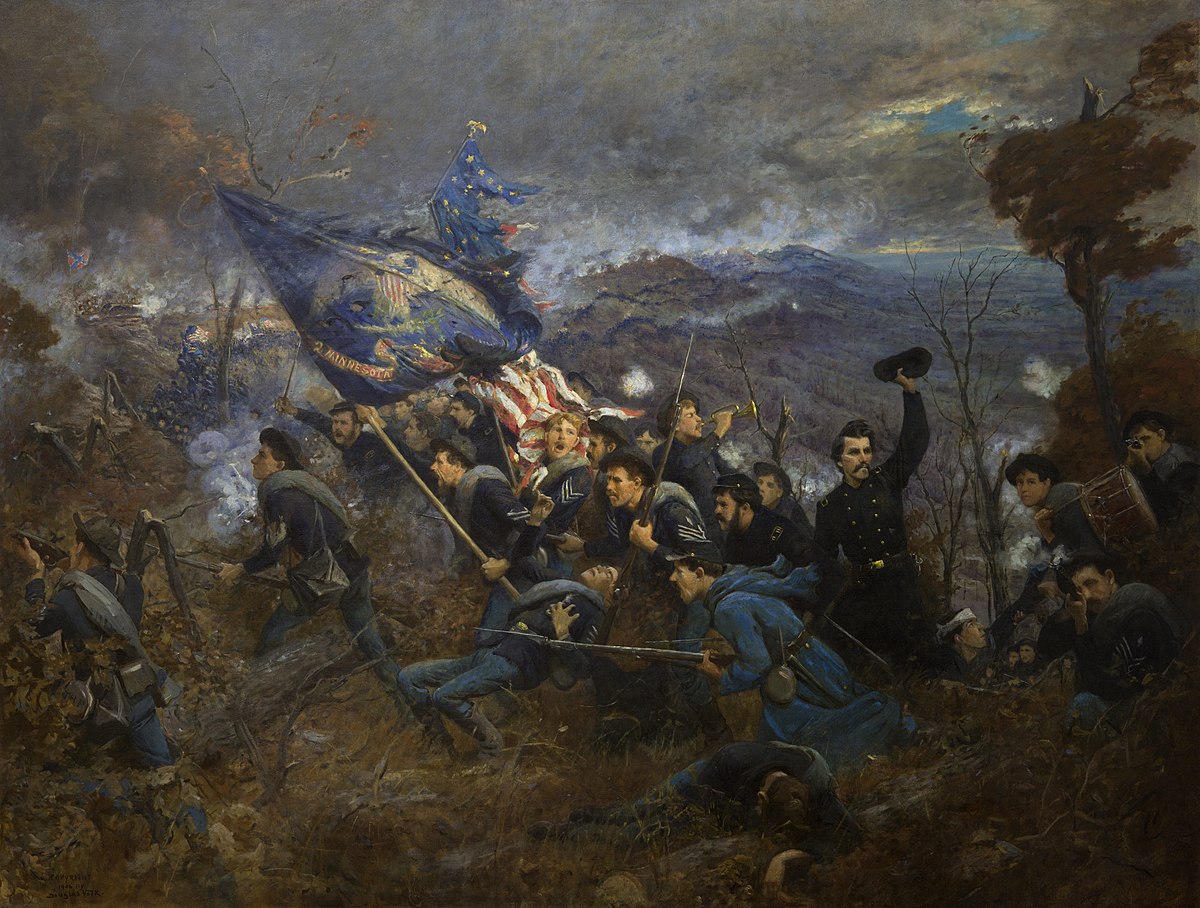
Battle of Missionary Ridge
Chattanooga, Tennessee, USAAfter their disastrous defeat at the Battle of Chickamauga, the 40,000 men of the Union Army of the Cumberland under Maj. Gen. William Rosecrans retreated to Chattanooga. Confederate General Braxton Bragg's Army of Tennessee besieged the city, threatening to starve the Union forces into surrender. Bragg's troops established themselves on Missionary Ridge and Lookout Mountain, both of which had excellent views of the city, the Tennessee River flowing north of the city, and the Union supply lines. The Union Army sent reinforcements: Maj. Gen. Joseph Hooker with 15,000 men in two corps from the Army of the Potomac in Virginia and Maj. Gen. William Tecumseh Sherman with 20,000 men from Vicksburg, Mississippi. On October 17, Maj. Gen. Ulysses S. Grant received command of three Western armies, designated the Military Division of the Mississippi; he moved to reinforce Chattanooga and replaced Rosecrans with Maj. Gen. George Henry Thomas.
In the morning, Maj. Gen. William Tecumseh Sherman, commanding the Union Army of the Tennessee, made piecemeal attacks to capture the northern end of Missionary Ridge, Tunnel Hill, but were stopped by fierce resistance from the Confederate divisions of Maj. Gen. Patrick Cleburne, William H.T. Walker, and Carter L. Stevenson. In the afternoon, Grant was concerned that Bragg was reinforcing his right flank at Sherman's expense. He ordered the Army of the Cumberland, commanded by Maj. Gen. George Henry Thomas, to move forward and seize the Confederate line of rifle pits on the valley floor and stop there, as a demonstration to assist Sherman's efforts. The Union soldiers moved forward and quickly pushed the Confederates from the first line of rifle pits, but were then subjected to a punishing fire from the Confederate lines up the ridge.
After a short pause to regain their breath, the Union soldiers continued the attack against the remaining lines further up the ridge, finding that the rifle-pits were untenable and in pursuit of the fleeing Confederates. This second advance was taken up by the commanders on the spot and also by some of the soldiers. Seeing what was happening, Thomas and his subordinates sent orders confirming orders for the ascent. The Union advance was somewhat disorganized but effective, finally overwhelming and scattering what ought to have been, as General Grant himself believed, an impregnable Confederate line. The top line of Confederate rifle pits was sited on the actual crest rather than the military crest of the ridge, leaving blind spots for infantry and artillery. In combination with an advance from the southern end of the ridge by divisions under Maj. Gen. Joseph Hooker, the Union Army routed Bragg's army, which retreated to Dalton, Georgia, ending the siege of Union forces in Chattanooga, Tennessee.
